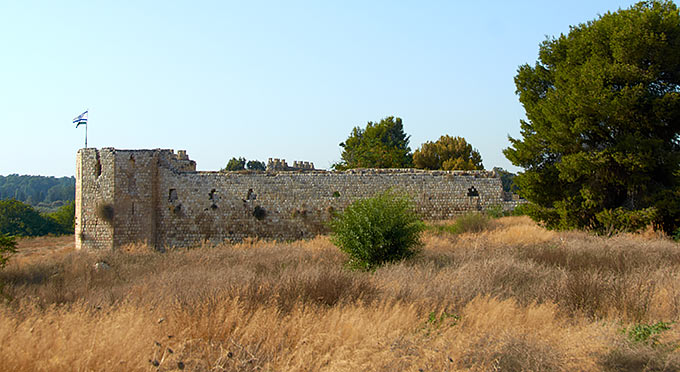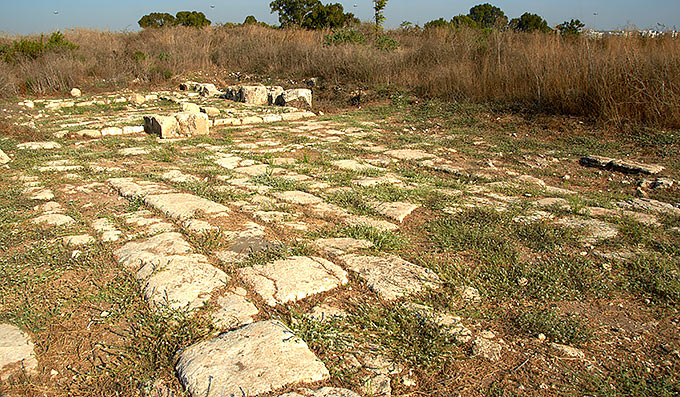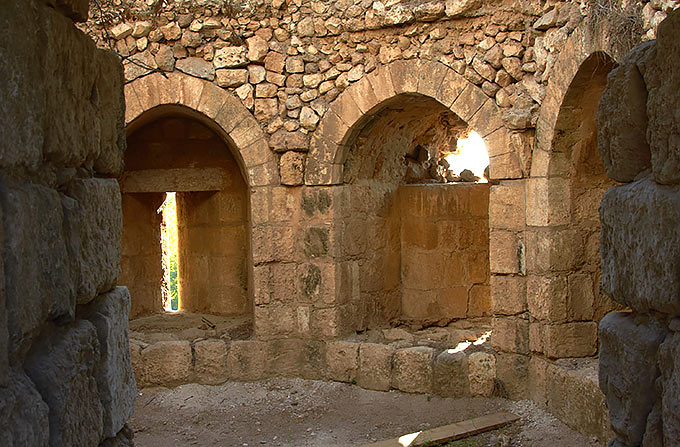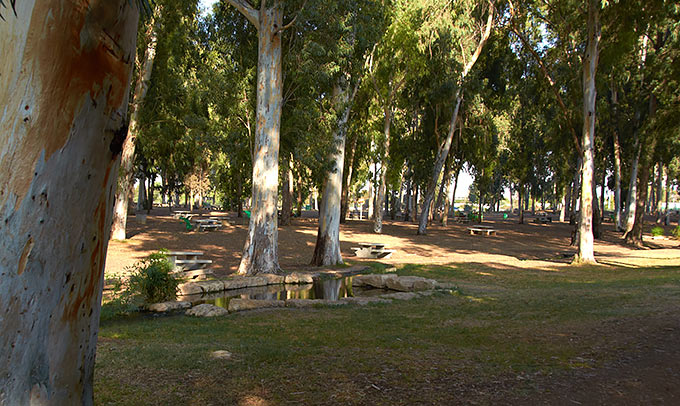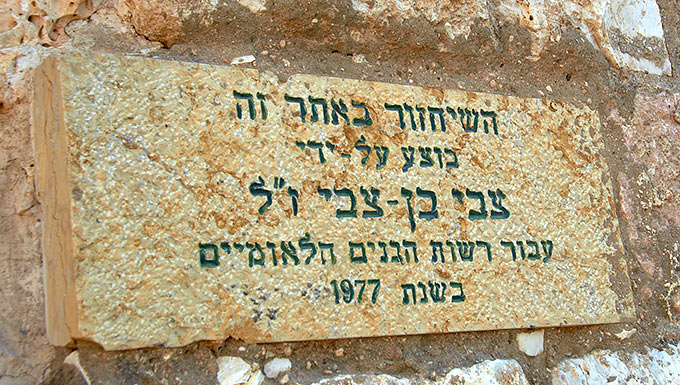Antipatris Fortress
(Antipatrida, Αντιπατρίς)
The place is terribly ancient, like almost everything in Israel. It is located on the Tel Afek hill, near which passed the important trade route Via Maris (Seaside Route or Road of the Kings) from the Levant and Mesopatamia to Egypt. The word Afek comes from the Akkadian Aphek/Aphekum - key, source.
A permanent settlement on the hill has existed since the beginning of the Bronze Age (about 4500-3150 BC). Archaeologists have discovered the remains of 2-meter thick fortress walls dating back to 3300-3000 BC. From 2700 BC the city was abandoned for almost 700 years, but then was revived and became one of the important fortified points of the Canaanite state.
Afek is mentioned several times in the Bible, as well as in various ancient Egyptian sources, such as the list of cities conquered by Pharaoh Thutmus III.
At the beginning of the Iron Age, Jews, led by Yehoshua Bin Nun, captured the city, but in the 12th century B.C. the Philistines, in their turn, came here in large numbers and Afek became their possession until about 1000 BC, when the army of King David pushed them back to the sea. In the 8th century BC Assyrians captured the city and destroyed the fortress, around 610 BC. they were replaced by the Babylonians, then the Persians conquered the area and ruled here until the 4th century BC, when the Greeks came here in large numbers, beat the Persians and the Hellenistic period of the city began.
Under the Greeks, the city was called as Pegae ('source'). In 133 B.C. King Hyrcanus I of Judea recaptured the city from the Greeks. In 80 B.C. Hasmonean king Alexander Yannai built a fortified line against the Seleucids along the Yarkon River, the remains of which have recently been excavated in the suburbs of Tel Aviv. Afek was one of the points of this line.
In 63 B.C Roman commander Pompey captured all of Judea along with the city of Aphek, which he renamed to Artechuza. In 9 B.C. the Roman protégé King Herod the Great renamed the city to Antipatris in honor of his father Antipater.
Antipatris was mentioned several times by Josephus in his The Jewish War book. Vespasian's legions captured the city in 68 AD during the first Jewish War. In 363 AD a powerful earthquake destroyed most of the cities of Judea, including Antipatris. During the Byzantine period, only a small military post was here.
Under the Crusaders (1099-1291) the place was abandoned, although it is reported that the hill was called Toron aux Fontaines Sourdes ('tower of quiet springs'). Maybe some kind of fortification was built here, but no traces of it have survived.
A fortified caravanserai was built on the top of the hill in the mid-16th century by the Ottoman Turks under Sultan Silim II. The Turks actually built the current fortress in 1571-74 and called it Pinar Bashi (literally 'Head of the Source'). A garrison of 130 soldiers and cavalrymen was supposed to monitor law and order in the area.
1920-1948 Judea was under rule of British Mandate. In 1935-36 a large concrete pumping station was built to supply water to Jerusalem. In 1948, on the territory of Tel Afek there was battle between the Palmach and the Iraqis who were holed up in the building of the pumping station.
Nowadays the fortress is located on the territory of the Yarkon-Tel Afek National Park. Archaeological museum, picnics, sports, benches, nature trails, ice cream, flowers etc...
Impressions and reminiscences
Quite an oriental-colored, I would say, chamber-like and not a big fortress. It is moderately destroyed, moderately excavated, moderately abandoned. It was completely empty during my visit because of October, low season. There are a lot of fences around, yes, but Israel is generally a country of fences (what did you think of Russia? No, here the concentration of fences per meter of usable living space is much higher).
A pleasant forest park with lakes, trees, paths and benches. And forests are very rare in this country The park is clean, quiet, deserted and peaceful. Summary: the place is completely optional to visit, but if you are passing by, it is strongly recommended to stop by.
I almost forgot - the Israeli police stopped me not far from this fortress. For what? For trespassing, as usual. I just wanted to come a little closer and take a picture of the abandoned railway station (No. 6 on the map). And the Arab guard snitched on me. After a short 24-minute interrogation, I've been released (according to local law, if you are detained for more than 25 minutes, the police are required to file formal charges).
Land forts and fortress:
Bip Castle Gatchina Ivangorod Izborsk Kexholm Kirillov Monastery Koporye Novgorod Pechorskiy Monastery Peter&Paul Fortress Porkhov Pskov Schlisselburg Staraya Ladoga Tikhvin Vyborg Hameenlinna Hamina Kastelholm Kymenlinna Lappaenranta Raseborg Castle Savonlinna Tavetti Turku Visby Fredrikstadt Fredriksten Hegra Fort Hoytorp Fort Arensburg Narva Tallinn Antipatris Caesarea Jerusalem Latrun Fort Masada
Sea forts and fortresses:
Alexander Fort Ino Fort Krasnaya Gorka Fort Kronstadt: Kotlin isl. Kronstadt: North Forts Kronstadt: South Forts Trongsund Hanko Svartholm Sveaborg Marstrand Siaro Fort Vaxholm Oscarsborg
Artillery batteries and individual guns:
Coastal Artillery Hemso Fort
Fortified areas and defensive lines:
Karelian Fortified Area (KaUR) KrUR Leningrad Mannerheim Line Nevsky Bridgehead VT Line Harparskog Line Salpa Line Gothland
Russian
S e a r c h All news

